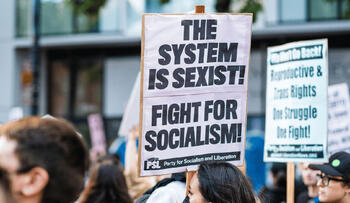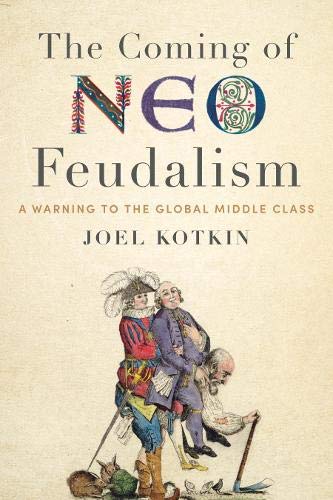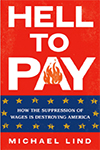
Western liberalism is in decline, challenged by rising authoritarianism on the Right and the Left. Since January 2025, Trumpism is generally perceived as the greater threat by American liberals, but the political power of the progressive Left is moving beyond its traditional redoubts in the media and academe. And for the time being, liberals are struggling to mount a coherent response.
By “liberals,” I mean those—from the Reaganite Right to the social-democratic Left—who value the basic institutions of Western society: electoral government, a free press and academy, an independent judiciary, separation of church and state, private property, and a market-based economy with a safety net. The progressive Left, on the other hand, sees these institutions as obstacles to be overcome or destroyed in pursuit of a revolutionary agenda designed to completely reorder American society. As former The New York Times opinion writer Pamela Paul argued in 2023:
In an increasingly prominent version of the progressive vision, capitalism isn’t something to be regulated or balanced, but is itself the problem. White supremacy doesn’t describe an extremist fringe of racists and antisemites, but is instead the inherent character of the nation.
And once one gives up on capitalism and the virtues of liberal institutions, assaults on equality under the law, basic property rights, and free speech inevitably follow. As two German conservatives have noted, today’s progressives embrace a “political ideology that questions the foundations of pluralism and democracy,” and favour a post-national “politics of identity and minority entitlements.”
This assault on capitalism and markets may yet be critical to the ascendency of progressives as a growing share of popular opinion shifts in their favour. According to a 2020 Edelman report, “56 percent of respondents [in 28 countries surveyed] agreed that capitalism ‘is doing more harm than good in its current form.’” More than four-in-five worry about job loss, particularly from automation. Rising inequality and a more general fear of downward mobility have boosted US support for expanded government and greater income redistribution, with a majority under forty strongly in favour of limiting wealth.
This is no longer just a call for reforming the existing system. Even in the US, a majority of young people are embracing socialism as a superior economic model. A recent survey of Europe found that “fewer than six in ten young Europeans believe that democracy is the best form of government. One in five say they would support authoritarian rule under certain circumstances. And only 6% believe their political system functions well.” According to political scientist Yascha Mounk, “signs of democratic deconsolidation in the United States and many other liberal democracies are now similar to those in Venezuela before its crisis.”
The Old Left and Progressive Violence
The Democratic Socialists of America (DSA) favour a mass-mobilisation model of politics, inspired by historical examples like that of Chile’s Salvador Allende, and this approach seems to be bearing electoral fruit. In New York, DSA member Zohran Mamdani looks likely to win the race for New York City’s mayoralty in November. Mamdani is the latest in a line of likeminded figures to rise to power in cities like Los Angeles, Chicago, and Oakland (possibly soon to be joined by Minneapolis and Seattle). These politicians reject liberalism and capitalism in favour of a massive tax on the “aristocracy,” intrusive rent controls, city-owned grocery stores, free transit, and radically higher minimum wages, policies that are likely to deepen rather than alleviate America’s economic woes.
The late Michael Harrington, who was something of a personal mentor to me, co-founded the DSA. He embraced the reformist, fiercely anti-communist socialism pioneered in the last century by the likes of Karl Kautsky and Eduard Bernstein in Germany. In the US, this tradition informed the politics of men like Eugene Debs and Norman Thomas as well as a group of pragmatic mayors known as “sewer socialists,” most notably in Milwaukee. Mike’s true passion was helping the poor and the working class—a reflection of his early embrace of Catholic values (as a young man, he joined the Catholic Worker movement, although he later became an atheist).
But modern progressivism, the late historian Fred Siegel noted, is a more elitist movement, the roots of which can be traced to Bismarckian Germany and Wilsonian America. Progressives hope to see a “revolt against the masses,” and in the West, arguments justifying elite control have come naturally to radical intellectuals: “Who else but intellectuals,” asked sociologist C. Wright Mills, “are capable of discerning the role in history of explicit history-making decisions?” Such hierarchical notions would probably not have appealed to politicians of the postwar Left like Clement Attlee, Australia’s John Curtin, New York’s Fiorello LaGuardia, California’s Pat Brown, or Minnesota’s Hubert Humphrey.
Mamdani and the growing coterie of elected progressives are not looking to replicate the democratic socialism of Harrington and Debs. Nor are they looking to replicate the Swedish social-democratic model, which draws its wealth from a vibrant market economy. The models embraced by the DSA and other progressives celebrate the kind of Third World Marxist radicalism once epitomised by Kwame Nkrumah (from whom Mamdani got his middle name), Che Guevara, Fidel Castro, and Hugo Chavez. Today, this manifests in support for Palestinian terrorism and increasingly naked expressions of raw antisemitism that would have horrified Mike Harrington were he alive to see it.
As support for liberalism wanes, support for political violence is being normalised on the Left and the Right, particularly among the young. A recent report found that nearly a third of all Americans—and 56 percent of those left-of-centre—told pollsters that the assassination of President Donald Trump would be at least “somewhat justified.” Almost as many feel the same way about Elon Musk. A growing online culture has made a folk hero of Luigi Mangione, the man accused of assassinating healthcare executive Brian Thompson.
In this Bolshevik worldview, no compromise with the enemy is possible, a grave reversal of normal politics that is also increasingly evident on large parts of the MAGA Right. Remarkably, many progressives and even mainstream Democrats have been reluctant to denounce the violence of modern street-fighting groups like Antifa. NPR’s political correspondent Mara Liasson even compared them to the troops who stormed the Normandy beaches.
Radicalism and the Family
Many of today’s activists seem to be driven by their own cultural anxieties and psychological needs rather than by economic concerns, and a driver of their radicalisation may be the decline of the family. When Hubert Humphrey and Harold Wilson represented the Left during the 1960s, Western democracies were still overwhelmingly familial societies. Although Marx and—particularly—Engels denounced marriage and monogamy, most moderate socialists embraced policies that encouraged family formation. They certainly never adopted anything like the anti-family doctrines are now prevalent in many feminist, gay, and transgender activist circles.
Back then, the liberal and social-democratic goal was not to undermine the family, but to provide opportunities for advancement and security into old age. Without a strong family structure, individuals can feel adrift, which makes them susceptible to manipulation and more likely to turn to the state for aid and comfort. As traditional familialism has diminished, a generation has arisen that is isolated and disconnected. A new Institute for Family Studies analysis found that, in 2020, one-in-six women remained childless by the time they reached the end of their childbearing years, up from one-in-ten in 1980. The percentage of “child-free” women is expected to rise. It is now estimated that 45 percent of women aged between 25 and 44 will be childless by 2030.
There are around 44 million single women in the US today. This makes them a larger voting bloc than African-Americans (34.4 million), labour-union members (14.3 million), or college students (more than 19 million). Progressivism across the West—including in the UK—is led by a radical vanguard of single women and non-binary men. In Canada, according to a 2020 poll, women favoured the Liberals by two-to-one while men slightly went to the Conservatives.
This shift has occurred as growing numbers of people on the Left reject traditional notions of family and gender. A 2023 Gallup poll found that over 28 percent of Gen Z women identify as LGBTQ+, more than twice the rate for Millennials and almost three times the figure for Gen Z men. Progressive women are also increasingly unlikely to have offspring. According to a recent NBC poll, women aged 18–29 who voted for Kamala Harris in 2024 rank having children twelfth out of thirteen elements in their “personal definition of success.” Male Donald Trump voters in the same age cohort rank having children first. Unsurprisingly, the fertility gap between progressives and traditionalists, particularly religious traditionalists, has continued to widen since this trend began in the 1980s.
Economic Drivers
Cultural shifts may have propelled the progressive movement forward, but economics could prove to be its ticket to power. Growing pessimism, particularly among the young, provides opportunities for disruptive illiberal politics on both the Right and the Left.
A new Wall Street Journal-NORC poll found that the percentage of Americans who believe they have a good chance of improving their standard of living fell to 25 percent, a record low in surveys dating back to 1987. Nearly seventy percent of respondents said they no longer believe in the American Dream or never did—the highest level in nearly fifteen years of surveys. Negativity was particularly pronounced among Democrats, with ninety percent holding a negative view of the future, almost twice as much as Republicans.
Since the 1970s, disillusioned working-class voters have moved to the Right, and since the mid-2010s, they have increasingly embraced the populist New Right in the US and Europe. Their beef is not with property rights or markets but with firms that offshore jobs and import unskilled migrants. Remarkably, the Ohio Teamsters even endorsed Vivek Ramaswamy in that state’s gubernatorial race. As a result, the progressive base now mostly consists of educated professionals who have traditionally been protected from the economic dislocation produced by liberal trade and immigration policies.
But in the emerging AI-driven economy, many college graduates now face the prospect of a difficult future. Around forty percent of recent US graduates are underemployed and working in jobs where their college credentials are essentially worthless. Rates of homeownership among the young are far lower than in the past. Many younger workers face a world in which “good” jobs are disappearing, even as they try to cope with rising rents and exorbitant tuition fees. Artificial intelligence is likely to accelerate this trend, with educated workers making up a growing percentage of the long-term unemployed.
Eighty-two percent of Millennials fear that AI will reduce their wages. According to McKinsey, at least twelve million Americans will be forced to find new work by 2030.
Even the “geeks” are finding themselves vulnerable to what economists call “skills-based technological change.” Tech firms like Salesforce, Meta, Amazon, and Lyft have announced major cutbacks in their white-collar workforce, and these positions are unlikely to return. Within months of AI’s emergence, freelance work in software declined markedly, along with pay. And this displacement will not be restricted to Silicon Valley. Many skilled professionals, including those in finance and even in “creative jobs”—actors, writers, and journalists—could be threatened by AI. Over time, we may find that no power on Earth is more fearsome than what one Marxist scholar called “the swelling population of college graduates caught in a vise of low-paying jobs and obscene amounts of debt.”
The Impact of Climate Catastrophism
The progressive embrace of climate catastrophism reinforces the new class dynamic. As Ruy Teixeira and others have pointed out, many working- and middle-class people do not embrace a climate policy targeting the blue-collar “carbon economy.” In an article for the environmentalist magazine Breakthrough Journal, Ted Nordhaus and Alex Smith argue that climate policies have created “a class politics in which egalitarian elites, in the academy, NGOs, philanthropy, and the knowledge economy, wage economic war against the working classes.”
In places where the green regime has been ascendent—California, Canada, Australia, Greece, Germany, France, and the United Kingdom—climate policies tend to create high levels of “energy poverty.” They also raise the spectre of economic displacement. In Europe, these dynamics produced the 2019 gilets jaunes protests in France, and demonstrations by Dutch farmers and their Spanish, Polish, and Italian counterparts. Some beleaguered governments are now rethinking these policies as studies demonstrate a pattern of exaggeration on the issue in the media and academia.
But despite its negative economic impact, climate catastrophism does seem to appeal to a large youthful constituency. More than half of young people, terrified by erroneous predictions of a massive sea rise and future famines, believe that the planet is doomed. Many of them believe the solution to the climate issue lies in rapid deindustrialisation, which is already immiserating working-class communities in Europe, and in “degrowth,” a weird form of autarkic feudalism that requires people to live in small places, eat a meagre diet, and surrender any chance of upward mobility.
This kind of thing may win adherents in universities, college towns, and upper-income urban areas, but it is unlikely to be a political success elsewhere. The adherence to these draconian climate polices—along with an attachment to things like transgenderism, race quotas, and open borders—has prevented progressives from winning mass support so far, but that may be changing as those disenchanted with liberalism and MAGA look for a political alternative.
How Liberalism Can Return
The success of liberalism arose from a widespread belief that an imperfect system would nevertheless benefit most of the people most of the time. Today, however, Pew has found that the vast majority of parents—over seventy percent in the US—are pessimistic about the financial future of their offspring. Last year, less than ten percent of Americans under thirty thought that the country was headed in a good direction.
An economy where growth works for the affluent while everyone else sees rising inequality and downward mobility creates ideal conditions for a redistributive politics, particularly among the young at both ends of the political spectrum. Some Trumpists are now speaking about “MAGA communism” and even Trump is embracing state capitalism. For the time being, the rise of illiberal politics seems to be inexorable, and it is the illiberal wing of the Left that is best-placed to benefit if and when the illiberal Right falters in power. In the likely event of a Mamdani victory in New York, there are rumours that DSA-backed Alexandria Ocasio-Cortez may contest Senate minority leader Chuck Schumer’s Senate seat or even run for the White House. In a number of blue states, many Democrats in Congress and at the local level are being targeted for extinction by radicals in what could become a nasty internecine purge.
None of this is promising for the future of liberalism. The only way to slow or reverse this process lies in addressing the concerns of middle- and working-class citizens, who keep falling further behind even when the economy is strong. As in Weimar Germany, the key issue here is what historian Eric Weisz calls “the proletarianisation of the middle class.” Liberal institutions are unlikely to thrive when many people believe they are locked into a “postmodern subsistence economy.” Only the prospect of broad-base growth and greater opportunity can counter the authoritarian trend.
As Benjamin Friedman has argued, there’s a longstanding “connection between economic growth and social and political progress, not only financially but in terms of racial relations, family and support for environmental improvements.” The way to combat illiberalism is by creating conditions for a better future. We must make it easier for the young to rise, buy houses, start businesses, and raise families. If those avenues are all closed off, everyone will pay a heavy price, and the results won’t be pretty.
This piece first appeared at: Quillette.
Joel Kotkin is the author of The Coming of Neo-Feudalism: A Warning to the Global Middle Class. He is the Roger Hobbs Presidential Fellow in Urban Futures at Chapman University and and directs the Center for Demographics and Policy there. He is Senior Research Fellow at the Civitas Institute at the University of Texas in Austin. Learn more at joelkotkin.com and follow him on Twitter @joelkotkin.
Photo: Patrick Perkins, via Unsplash.












